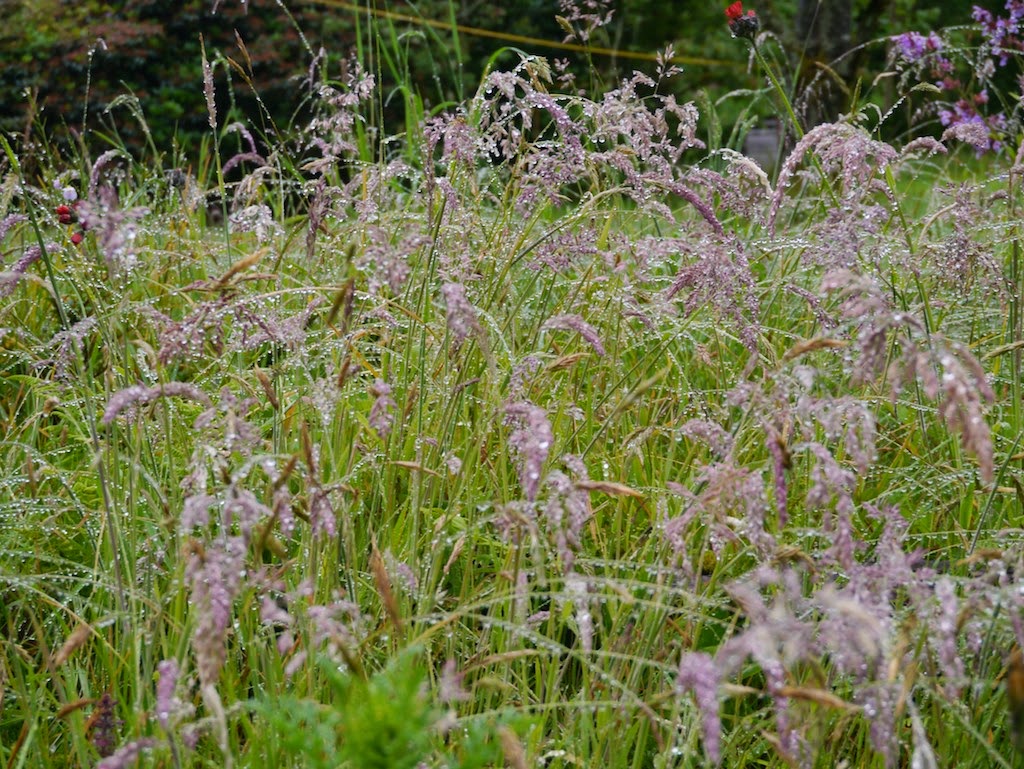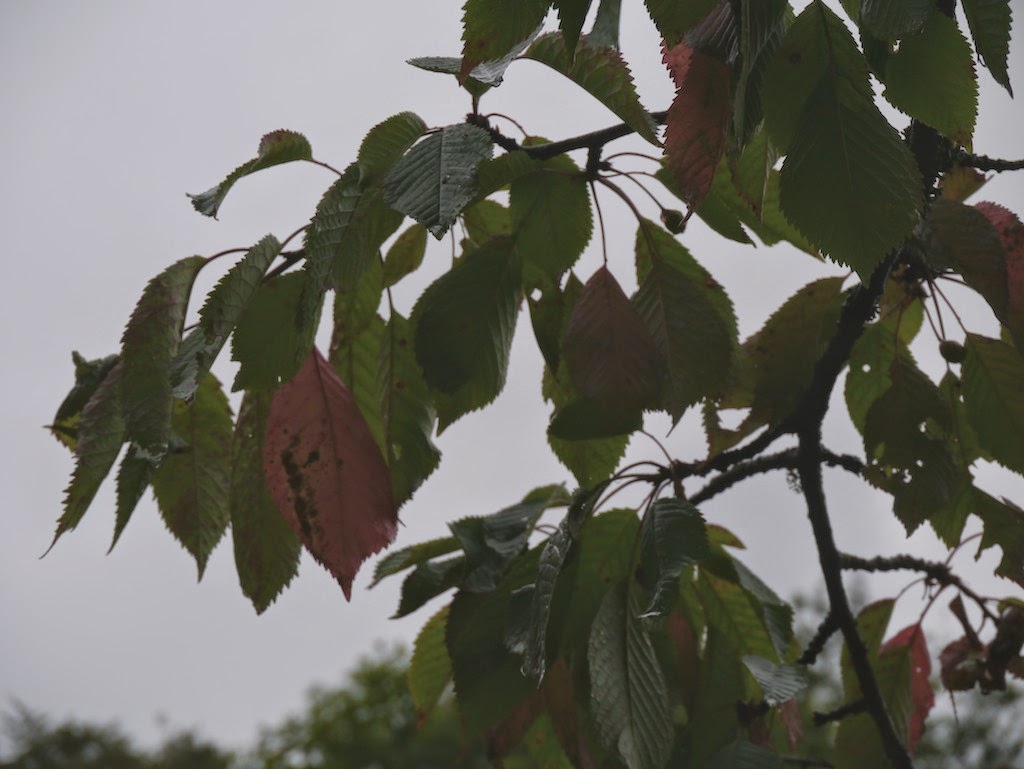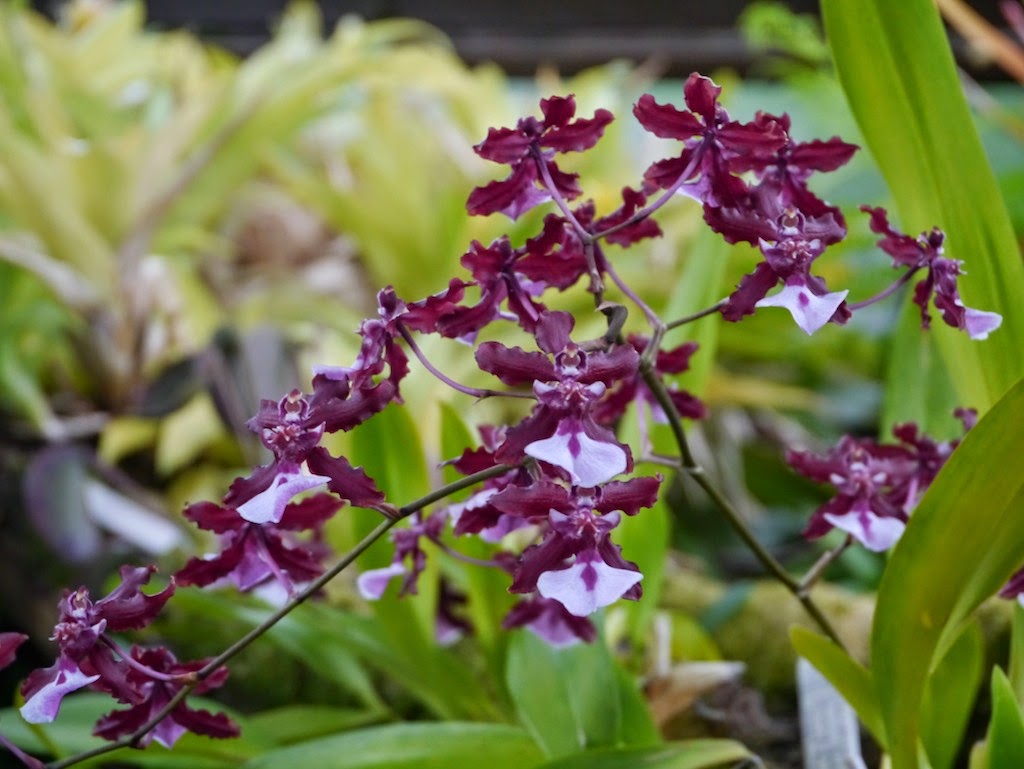I found some Whorled Caraway plants on the wild moor part of Carman Hill yesterday when I was looking at some grasses. In the interests of science I cut one stem to check its solidity or otherwise. Like the Whorled Caraway at the Boggy Brae, it had a hollow stem. The bore did seem narrower than the BB plants but only until it had dried out a bit and then it was the same, so what Francis Rose says about it having a solid stem would appear to be wrong. The umbel and the individual flowers were smaller than the BB plants though.
~~~~~~~~~~
In my garden at the Boggy Brae there is an interesting plant. Well, there are lots – latest count of native wild plant species is 147. I haven't started on the fungi and I've still quite a way to go on grasses, ferns, lichens and mosses.
Back to today.
I decided to have a closer look at a plant I hadn't noticed in previous years. Perhaps it wasn't there! As the pignut was getting on with ripening its fruit another Umbellifer was beginning to flower. The unopened flowers have a pinkish tinge and the open ones are mainly white, as can be seen in this shot
So, out came the flowers books. I have seven but the three I use all the time and together are these:
1 Francis Rose, The Wild Flower Key (Warne, 1991 reissue of the 1981 edition)
2 Roger Phillips, Wild Flowers of Britain (Pan Books, 1977)
3 W Keble Martin, The Concise British Flora in Colour (Rainbird, 1965)
I've owned the Keble Martin for forty-two years. It's probably my oldest possession, a birthday present from an aunt who, along with my parents, encouraged my interest in wildflowers. The Phillips I've had for thirty-six, and the Rose for 'only' nine or ten.
Anyway, let's get back to the plant. It seems to be a caraway and, because of its whorled leaves, would seem to be Whorled Caraway (Carum verticillatum).
 |
| Whorled leaf |
Rose, who gives lots of useful information, for much of which one needs a 10x loupe lens or a microscope, says the umbels are 2–5cm across. The Boggy Brae umbels are about 7cm across.
 |
| Umbel ~7cm across |
Rose also says that individual flowers measure 1mm across. The Boggy Brae flowers measure ~3mm across.
 |
| Single flower ~3mm across |
And he says the stem is solid. You've guessed it, the stem of the Boggy Brae is definitely hollow. You may have already noticed this from one of the photos ^
 |
| Cross section of hollow stem |
Right, thinks I, so it's not Whorled Caraway, even though the leaves seem to fit the description 'whorled'. Now then, Rose goes on to mention a similar plant which has a hollow stem and "apparently-whorled hair-like lobes to leaflets of the three-four times pinnate leaves." This plant, Spignel or Meum athamanticum is 'stouter' and, Rose says, has 'larger triangular leaves' (hmm?) and 'few or no bracts'. Ah... the BB plant has bracts – the small leaves at the base of a main umbel.
 |
| Umbellifer bracts |
Even though, according to Rose, Spignel grows in Scotland, and even though the BB plant is bigger than he describes Whorled Caraway as being, and has a hollow stem, I remain befuddled at this point in the proceedings.
I proceed to Keble Martin. KM mentions Whorled Caraway as growing "in damp acid meadows" (that's us!) but flowering July–August (we're nearly at July!). He mentions that Whorled Caraway is perennial. I don't know about that yet as this is the first year I've noticed the plant in question at the Boggy Brae. Then he mentions Common Caraway (Carum carvi, hereafter CC), which Rose doesn't. Phillips does and both he and KM say CC is biennial. Again, I can't ascertain that yet. KM says the stem of CC is striate, that is marked with slender streaks or furrows. You can just about see that in the last photo, below the bracts. KM say CC is 'rather rare'; Phillips says it is 'very rare all over the British Isles'. It is the only Carum he mentions at all and the photograph of his plant is nothing like the BB plant.
The next photo gives a close-up of a leaf of the BB plant which looks to me like KM's drawing and like the picture in Rose. Rose describes the leaflets of Whorled Caraway (WC) as "divided deeply into linear bristle-like green lobes, appearing as if in whorls up leaf stalks". That's what it looks like to me in the next photo.
So what is the Boggy Brae plant? Right now, I'm not sure. There is apparently a difference between the fruits of WC and Spignel, the former has fruits which are 2mm long and oval while the latter has fruits which are 6–10mm long and elliptical. Something tells me the BB fruits are going to be the big ones. Perhaps I have a hybrid.
Comments from botanists would be most welcome! Meanwhile I'll wander off and meditate on the difference between ovals and ellipses – eggs (i.e. three dimensional shapes) versus diagonal cross sections of cones (two dimensional shapes). I wonder if Rose meant to say ellipsoid rather than elliptical? Anyway, I'll have to wait for the fruit to form.
Results of today's investigation
In favour of Whorled Caraway (Carum verticillatum): the whorliness and bristle-like lobes of the leaves, pink anthers (KM mentions those; see pic below), bracts, growing in damp acid meadow, locally common in the west of Scotland.
 |
| pink anthers |
Not in favour of WC: flowering before July/August, umbels and flowers too big, hollow stem.
In favour of Spignel (Meum athamanticum): the size of the plant, hollow stem, flowering in June.
Not in favour of Spignel: presence of bracts, no triangular leaves.
In favour of Common Caraway (Carum carvi): stem striate, stem hollow, flowering in June.
Not in favour of CC: leaf segments not linear, rarity.
Pheeeuw!! Need coffee and cake!














.jpg)




































